Could I have a Tietz, please?
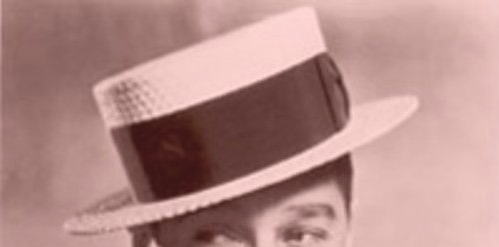
German traders played a major role in the development of Antwerp in the 19th and early 20th centuries. One of the names that still rings a bell with some of the elder locals is Leonard Tietz. Where one can now find “A l’Innovation”, next to the Van Dyck statue along the Meir, Leonard Tietz opened his Grands Magasins.
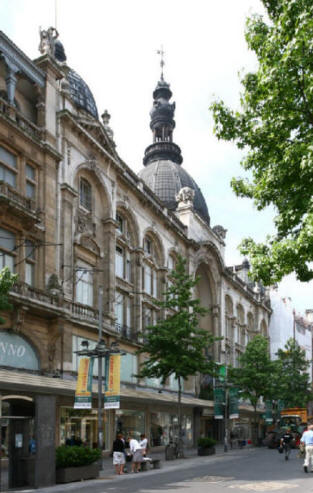
As the name implies, he found inspiration in the large department stores that had arisen in late 19th century Paris. One of the products that he created a name with for himself was a type of straw hat. People like Maurice Chevalier usually wore that type of hat. People in Antwerp referred to these hats as a ‘Tietz’.
The richly ornamented façade functions as a kind of prelude. It gives the public a foretaste of the riches that await them inside. It is a design of the Antwerp architect Joseph Hertoghs. Hertoghs acted as a kind of house architect for the German colony around the turn of the century.
After World War I, Tietz and many other German families got under fire in the anti-German climate of those days.
All of Tietz’ shops, including the one in Antwerp and the one in Brussels in the Nieuwstraat, were confiscated. The Belgian government sold them publicly. It was the Bernheim family, who originated from Alsace, and had started their own chain of department stores under the name “A l’Innovation”, who bought the Tietz shops for their own use. Interestingly enough, the Inno chain later fused with Galleria Kaufhof, which is a descendant of … the Tietz shops in Germany.
Recently Inno restored the façade to its original condition. A few less successful changes from the 60’s and 70’s have disappeared. The project cost over 4 mio euro, but the result shows the decision was right.
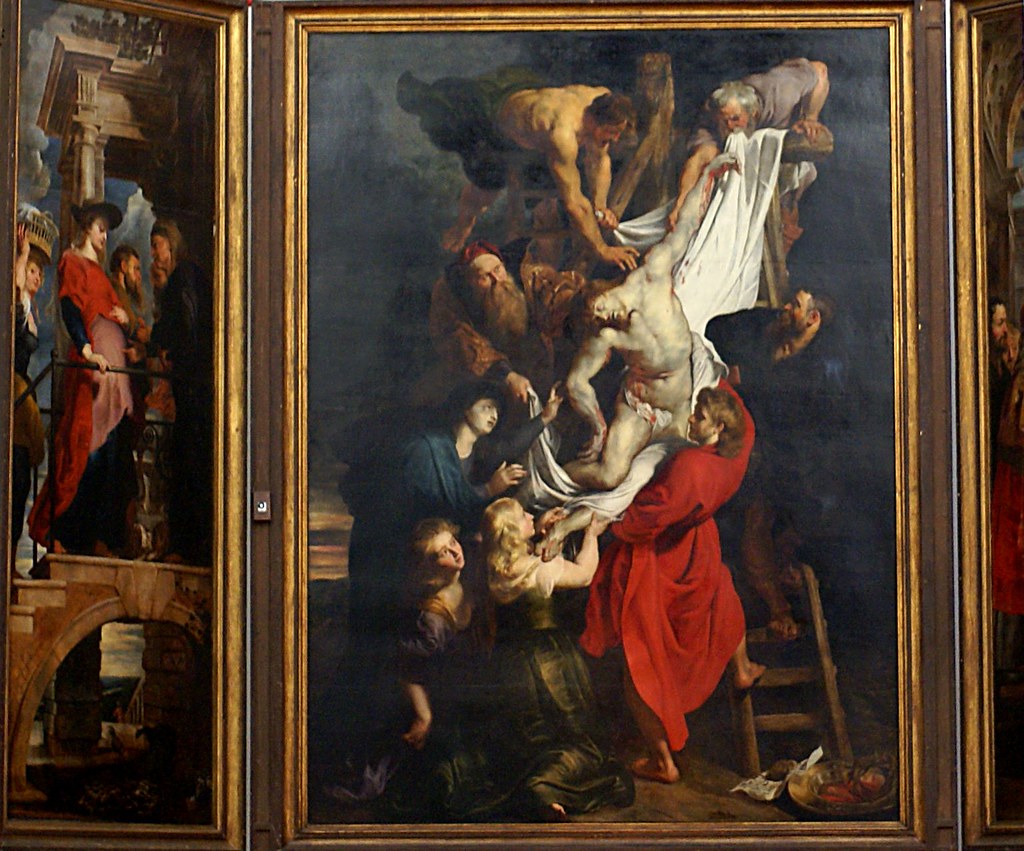 Although a number of historical churches have vanished (e.g. the Walburgischurch in the very center of the old town, and the church belonging to the St-Michael’s cloister in the environment of the Kloosterstraat), we still have 5 churches with a rich historical background.
Although a number of historical churches have vanished (e.g. the Walburgischurch in the very center of the old town, and the church belonging to the St-Michael’s cloister in the environment of the Kloosterstraat), we still have 5 churches with a rich historical background. The youngest of the historical churches is the Jesuits’ church: St-Carl-Borromeus. Its façade is a fine example of baroque art, but only inside will you be able to feel the effect of baroque completely, especially when you enter the Houtappel chapel (to your right facing the main altar). Also this church is closely connected with Rubens as there are clear signs that Rubens had a hand in the design of both the façade and the tower. Originally the aisles left and right had their ceilings painted by Rubens, but a fire in 1718 destroyed all of these paintings. Rubens also painted two large canvases for the main altar, but the originals are now on display in Vienna. The really unique thing about this church is that the painting adorning the main altar can be switched. The original device to perform this feat is still active and is being used four times a year.
The youngest of the historical churches is the Jesuits’ church: St-Carl-Borromeus. Its façade is a fine example of baroque art, but only inside will you be able to feel the effect of baroque completely, especially when you enter the Houtappel chapel (to your right facing the main altar). Also this church is closely connected with Rubens as there are clear signs that Rubens had a hand in the design of both the façade and the tower. Originally the aisles left and right had their ceilings painted by Rubens, but a fire in 1718 destroyed all of these paintings. Rubens also painted two large canvases for the main altar, but the originals are now on display in Vienna. The really unique thing about this church is that the painting adorning the main altar can be switched. The original device to perform this feat is still active and is being used four times a year.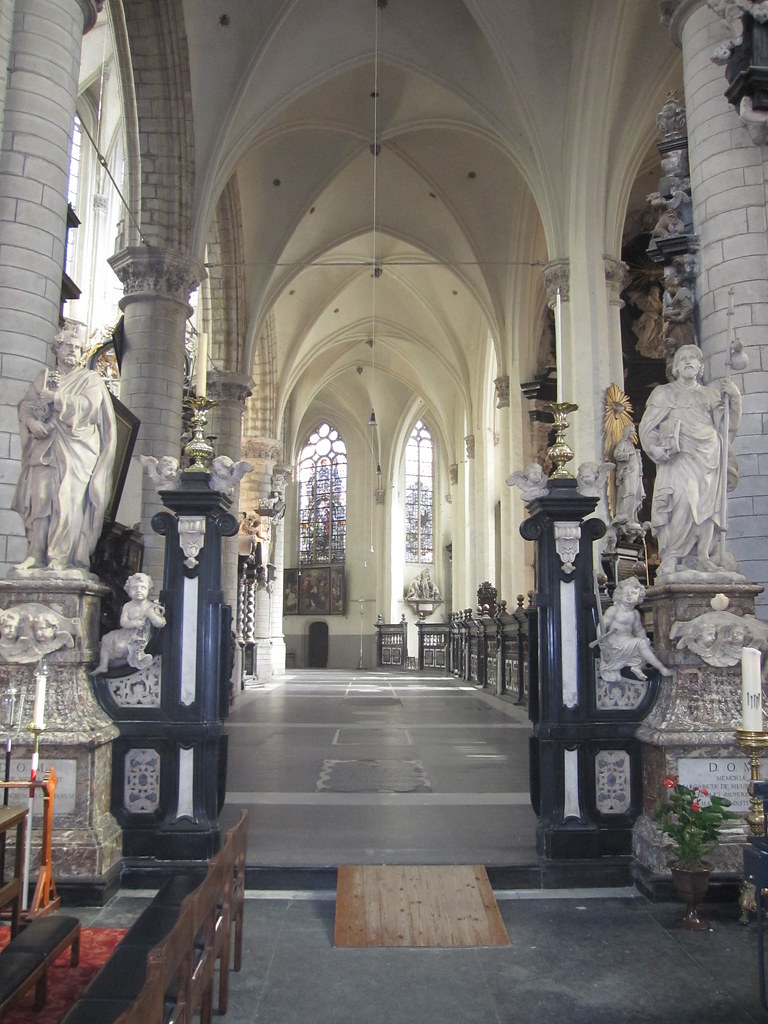 Another church linked with Rubens is St-James’s, located near St-Jacobsmarkt, entrance via the southern aisle in Lange Nieuwstraat. Here the master is buried beneath a painting of his own choice. This church boasts a very impressive main altar in baroque style and an organ on which the young Mozart one gave a concert as he passed Antwerp in the company of his father and his sister.
Another church linked with Rubens is St-James’s, located near St-Jacobsmarkt, entrance via the southern aisle in Lange Nieuwstraat. Here the master is buried beneath a painting of his own choice. This church boasts a very impressive main altar in baroque style and an organ on which the young Mozart one gave a concert as he passed Antwerp in the company of his father and his sister.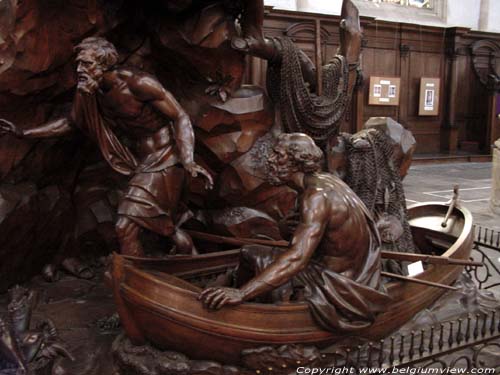 Last but not least there’s St-Andrew’s (entrance Waaistraat) which boasts what is probably the most fascinating pulpit in the world.
Last but not least there’s St-Andrew’s (entrance Waaistraat) which boasts what is probably the most fascinating pulpit in the world.